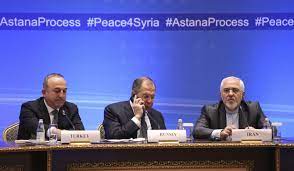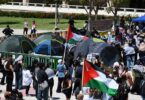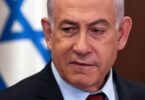Dr. Dania Koleilat Khatib
Kazakhstan on Wednesday surprised everyone, including the Russians, by stating that it would stop hosting talks aimed at resolving the Syrian conflict. The announcement came as delegates were wrapping up the 20th round of talks held in the capital, Astana.
The basis for the decision was that the talks that started in 2017 have achieved their purpose. However, in reality, we are far from any political solution in Syria. A military solution is also not on the table: The regime cannot face the Americans in the northeast or the Turks in the northwest. Neither Turkiye nor the US are ready for another faceoff in Syria.
Today, Syria is de facto divided into three regions. The northeast is controlled by the Syrian Democratic Forces. The Kurdish Democratic Union Party, known as the PYD, is the force behind the SDF, but Turkiye views this group as the Syrian branch of the Kurdistan Workers’ Party, or PKK , the terrorist group that conducts operations on Turkish soil. The SDF operates under American protection. In the northwest, Hayat Tahrir Al-Sham, formerly known as the Al-Nusra Front, is the main armed group. The northwest — or the greater Idlib area — is under Turkish protection. The rest of Syria is under Assad regime control, with some areas run by Russia and others by Iran.
If there is to be a breakthrough, these three areas need to be reconciled. If two areas were to come together, this would put pressure on the third. There are three possible scenarios, but they are equally difficult to achieve; hence, we are most likely to remain in a state of deadlock.
The first scenario is for there to be a regime-SDF agreement. This would be encouraged by the Russians, accepted by Gulf countries and even tolerated by the US. Brett McGurk, who currently handles the Middle East for the US National Security Council, wrote an article in Foreign Affairs magazine in 2019, in which he said the war in Syria would not end as a result of UN Security Council Resolution 2254, but rather by an agreement between the Kurds and the regime.
Though estimates vary, the SDF has approximately 50,000 fighters who are trained and equipped by the US. They could make up the backbone of the Syrian Army and beef up Assad’s forces, which are stressed by financial pressure. However, the various discussions held between the PYD and the regime resulted in no breakthrough. Even if the regime does agree to something, the Kurds know that it will renege on its promises.
To add to that, the regime, which perceives itself as being the winner of the 12-year war, does not feel the need to relinquish anything to the Kurds as they are in a precarious position. There are a lot of tensions with the Arab population. They are protected by a minimal American force and are constantly attacked by the Turks.
The second possible scenario is an extension of the Astana talks. This revolves around a Turkiye-Bashar Assad rapprochement. However, this is equally difficult. To start with, Turkish President Recep Tayyip Erdogan’s recent overture to Assad was mainly for electoral purposes. The Turkish public mood has been growing increasingly against Syrian refugees. The opposition was blaming Erdogan for the problem and arguing that he was preventing their return because of the bad relationship he has with Damascus.
One of the main campaign promises made by Erdogan’s opponents ahead of last month’s presidential and parliamentary elections was to ensure the return of refugees through negotiations with Damascus. Erdogan wanted to remove this argument from the opposition’s armory, so he announced that he was ready to meet with Assad for “peace” in the region. Now that Erdogan has won a new term, however, such a meeting is unlikely.
Assad, who has always had an uncompromising attitude, is conditioning any meeting on a Turkish withdrawal from the northwest. This is totally unrealistic. The people who are in Idlib are irreconcilable with the regime. If the regime attacked Idlib, it would result in a new wave of refugees that Turkiye cannot absorb, while the international community also does not want to see a new wave of refugees or any new carnage created by Assad’s forces. Also, Assad, despite the rhetoric, could not handle Idlib with all the problems it has. And Erdogan, who has been a supporter of the opposition for more than a decade, cannot pull the plug on them. This would greatly affect his image and his credibility.
The third and best scenario is a northeast-northwest agreement. This is equally difficult for the simple reason that Turkiye does not feel it needs to make any concessions to the Kurds. The PKK problem is solved at home and it is keeping the PYD contained by various coercive methods. Though such a solution would, in the long run, achieve stability, which would be in the best interest of Turkiye, Turkish policy has been conducted in a transactional manner. From the Turkish perspective, they do not have to make concessions to a weaker foe. Also, Turkiye does not trust the PYD, believing that the group will renege on its promises when it has the chance.
For this deal to happen, the US should intervene and clinch a bargain with Turkiye, one that gives both Ankara and the Kurds security guarantees. The deal should involve the PYD turning in their heavy and medium weapons. The local council that is now controlled by the PYD must also become democratically elected to ensure that it represents the variety of the communities and that the PYD’s influence is lessened.
In order to make sure that these changes are maintained, international observers should be deployed. In return, Turkiye would open its border and allow the flow of water. Ankara has been using the water of the Euphrates as a coercive measure against the Kurds in Syria. This solution, though difficult to achieve, is the best option because it will create enough pressure on Assad and his backers to abide by UNSC Resolution 2254 and accept a political transition that will end the conflict.
Arab News







